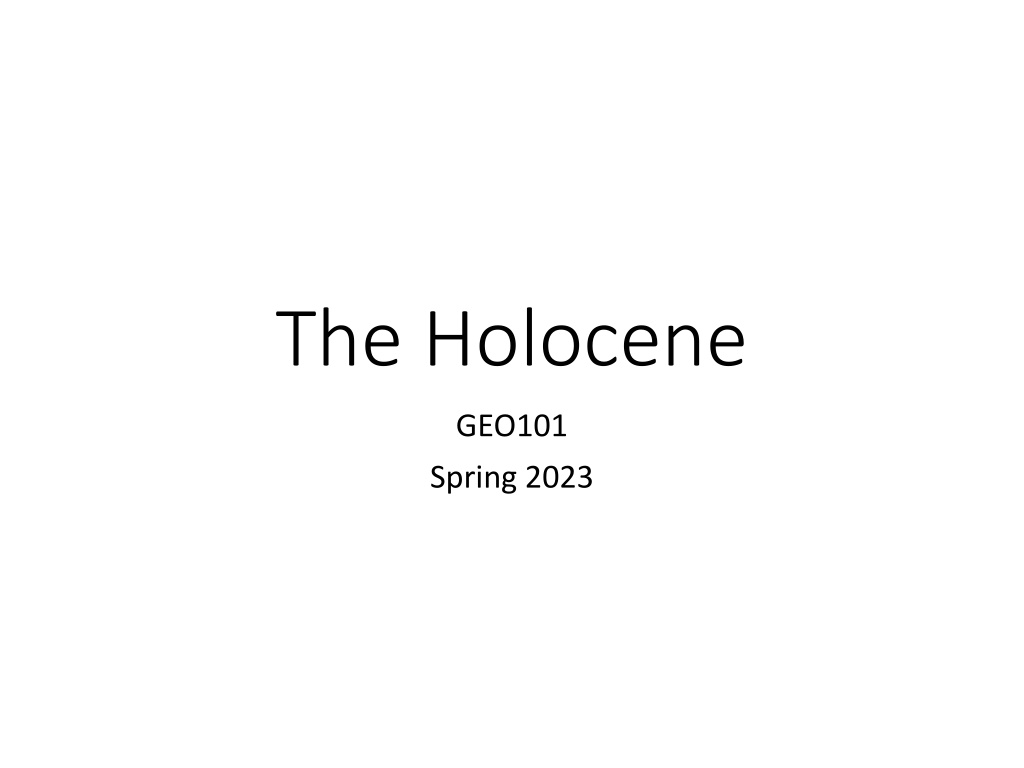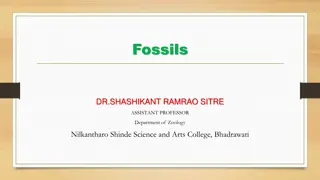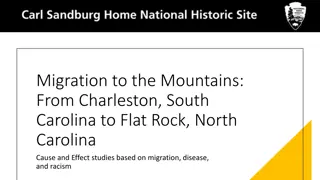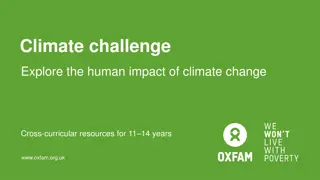Insights into the Holocene Epoch: Climate, Fossils, and Human Migration
Explore the Holocene Epoch through case studies, fossil records, and climate models. Learn about the peak temperatures, environmental changes, and human migration patterns. Discover how past climate conditions are reconstructed using fossils and lake sediments, and delve into the various factors contributing to Earth system changes over the last 18,000 years.
Download Presentation
Please find below an Image/Link to download the presentation.
The content on the website is provided AS IS for your information and personal use only. It may not be sold, licensed, or shared on other websites without obtaining consent from the author. Download presentation by click this link. If you encounter any issues during the download, it is possible that the publisher has removed the file from their server.
Presentation Transcript
The Holocene GEO101 Spring 2023
Contents The Holocene Epoch Case studies How did Humans Reach North America?
The Holocene Current interglacial Holocene Its peak temperature in 9,000 years ago was 0.8 C (1.5 F) warmer than 1850 CE [173 fossil/chemical records]
Temp. Relative to 1850 AD (0F) 10 5 0 -5 . -10 -15 -20 0 100000 200000 Years Before Present 300000 400000 500000
The Holocene Fossil records for vegetation and climate conditions in the past fossils in lake sediments lake sediments above water combine to recreate past climate
The Holocene Models used to explore causes of Earth system change. (computer model of ocean atmosphere) Earth in 3-D grid Inputs: environmental conditions Outputs: temperature, precipitation, wind.
Inputs for the last 18,000 years: insolation from the astronomical factors. N. hemisphere summer insolation peaked 9,000 years ago. (winter insolation is opposite) Glacial ice cover Aerosol dusts declined as glacial till gets vegetated.
Inputs for the last 18,000 years: CO2steadily . As ocean warmed, it releases CO2. fed into model for geographic patterns
The Holocene Sahara is now very dry. wetter conditions suggested by: cave paintings lake sediments with fossils like crocodile teeth and hippo s bones
9,000 years ago, no extreme desert. wetter and warmer?
Saharan summer monsoon: - Warming creates low pressure in desert, pulling moist air from Atlantic Ocean. - 9,000 years ago, summer insolation at peak, created stronger low pressure; pulled moist air further inland. allowed Sahara to have lakes etc.
Holocene Western USA lakes sediments above current water level, so lakes used to be deeper. 12,000 years ago: All western USA was wetter. 6,000 years ago: SW USA was still wetter than now, but PNW USA became even drier than today. Why? Model on wind and precipitation.
Wind predictions: Present: summer high pressure winds from land to ocean, so clear and dry. 12,000 years ago, ice sheet pushed jet-stream south. Jet-stream means arctic and tropical air meet: frontal precipitation. Winds went from ocean to land.
By 6,000 years ago, ice sheet retreated north. PNW USA dried out as dominated by high-pressure system rather than jet stream; summer insolation was great. SW USA has enhanced summer monsoon, so the lake level was still higher there than now.
How Did Humans Reach North America? Humans left Africa ~150,000 years ago [fossils and mitochondrial DNA] Arrival and dispersal hypotheses: #1 Bering land-bridge (LB) formed, then ~40,000 years ago, temporary ice-free corridor #2 LB, then ~14,000 years ago, permanent ice-free corridor #3 LB, then along coastline by foot and boat #4 by boat from Asia/Australia Possibly all, but evidence suggests #2.
How Did Humans Reach North America? Ice-free corridor east of Rocky Mountains open tundra environment w/ large mammals; hunters followed them.
How Did Humans Reach North America? Migration evidence: #1 Clovis points spread north to south #2 Megafauna extinctions follow 75% of megafauna extinct also, from north to south Megafauna had survived interglacial, so human arrival is most likely.

















































